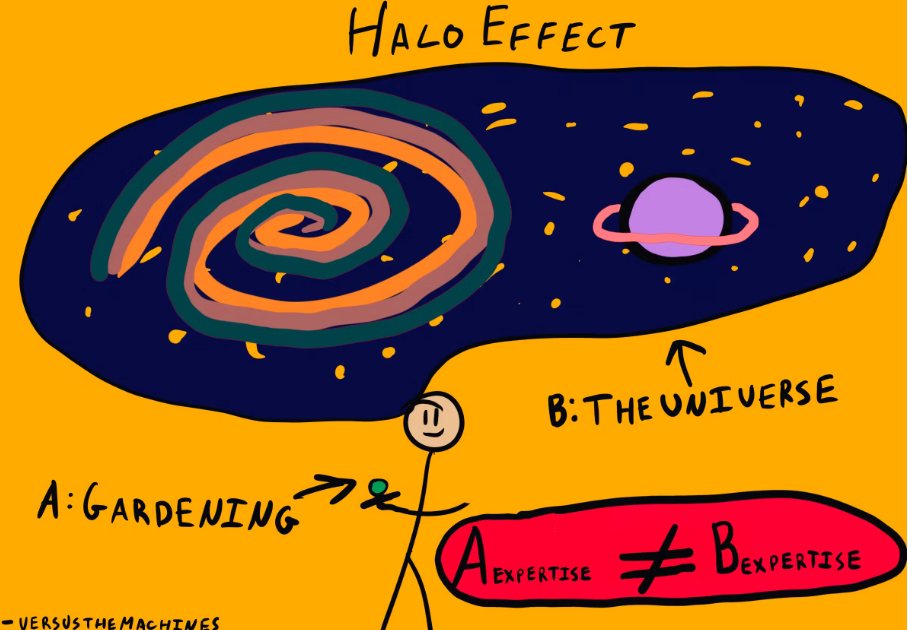There are no items in your cart
Add More
Add More
| Item Details | Price | ||
|---|---|---|---|
Hello marketers, as the marketing niche gets more competitive than ever before, psychology has become an unsaid subject you need to master.
Because as AI keeps on integrating with marketing, more and more tasks are getting automated,
which means that you, as a marketer the only thing that separates and makes you more valuable, or reduces the risk of getting replaced,
It is the ability to master psychology and use it to make people buy from you.
And that’s why, today, I am giving you 10 different psychological triggers and cognitive biases that you need daily to persuade people to buy your product.
So, without any further ado, let’s begin with the first trigger.
To put it simply, consider halo as a fancy term for the biases of first impressions that your brand has with your customers.

A first impression is what influences all of your future interactions with your ideal customer,
Because they are so weighted that they influence and direct all of the attitudes, beliefs, and understandings towards your brand.
That is why, as marketers, it is extremely important to continuously evaluate your marketing, specifically the first touch points,
And make sure that you’re putting your best foot forward.
But here’s another advantage of having a good first impression, and that is that it would act as a buffer against any future possible negative experiences.
In other words, what we call brand loyalty, just having the relationship started on a solid foundation, and even if something doesn’t go right in the future,
Your ideal customer would still perceive you as a positive influence.
That final call to action that gets them to take action, whether it is to watch a video, purchase a product, or drop a review.
The recency effect is based on the fact that we, as humans, are more inclined towards giving more importance to the recent information given to us, instead of the information that we’ve heard of.
If your ideal customer sees your stuff more recently, then they subconsciously think it’s important and hence get more inclined to purchase from you.
Essentially, what this says is that the frequency of someone seeing something, from the perspective of marketing, is your client seeing your business.
They are more likely to like and trust you, both of which are essential in building a solid and sustainable business.
So, to put things into perspective, if you appear more often in front of your customers, you get to kill two birds with one stone.
I.e., not only do you leverage the mere exposure effect, but you also get the benefits of the recency effect and hence increase your know, like, and trust factor.
Now, that doesn't mean you need to spend your whole day creating unique content across all different platforms,
You can just reshare and take away different parts and share them on different platforms.
This is a universal fact that people hate missing out on stuff; in short, FOMO is a real thing.
That is why one of the most important and valuable tools that you can use as a marketer is to use some form of scarcity or urgency.
It's compulsory to make it genuine, real, and authentic.
People nowadays have the busiest lives,
Balancing their social and professional life, while getting enough time to also take rest and scroll reels lolol.
And hence it becomes extremely hard for them to evaluate all kinds of different selections and options, and criteria, so if given the choice, they usually tend to compromise.
What that means is that for you to have a product or service that you’re trying to sell,
You’re typically better to breaking it into 2 or 3 options,
Preferably low-priced, medium-priced, and high-priced options.
The hack here is to put the one that you want to sell most in the middle as the compromise option.
Because it's proven that the middle option gets the most clicks, attraction, and sales in the end.
Pro tip: You can make it more appealing simply by labeling it “Most Popular”.
Also known as reinforcing existing beliefs;
Confirmation bias says that whenever we as humans receive new information, we tend to run it through a certain kind of filter,
It confirms the beliefs and the identity we already have.The key to tapping into confirmation bias is to understand your ideal target market,
And understand what makes them tick, what they believe, what they want, what they don’t want.
When you do this correctly, you can frame all of your future content in a way that just gets them to start nodding their heads in agreement with everything you say.
Because when you’re just confirming things they already believe, it makes you more relatable and likable.
Also known as 0 risk bias, and as the name suggests,
“People hate taking risks.”
And with this trigger, I want to make sure that you keep your business or your offer at the lowest or no risk possible. And how can we overcome this level of risk?
The obvious answer is by including risk reversals, such as a money-back guarantee, a 30-day guarantee,
But there would be some instances that you are not in a position to offer a guarantee, in which case, you have to double down on your marketing, especially with the social proof(testimonials and case studies).This effect is all about doing what other people do.
What I mean by this is that most of our life decisions are impacted by what others are doing,
And mostly these people are those whom we aspire to be like.
That is why providing elements of social proof and testimonials, and showing others who’ve got results, becomes such a powerful motivator to get someone to take action.
Last but not least, also known as the Rosenthal Effect,
It is essentially the cognitive bias where high expectations lead to better performance and better results.
Basically, when you put higher expectations on the people that you serve, be it clients, customers, friends,The result tends to be higher performance.
That is why you must treat your client and customer as smart, capable, and respectable people,
Because in return, they would act smartly, which is obviously good for you.
Now, the best way to use all these cognitive biases, and more importantly, the most ethical way, is to make sure that you’re building them on a solid marketing foundation.
Without that, honestly, all your hard work would go in vain, and that’s why I would recommend you smart people(Trigger 10 lol) watch out for this FREE crash course I created on marketing.

DAMINI TRIPATHI
Damini Tripathi, rocking the digital marketing scene for 5 awesome years. Started from scratch, now running my digital marketing agency and creating cool content too. She has been one of the fastest-growing digital marketers on the internet. Damini has also scaled multiple clients from ZERO —> HERO.